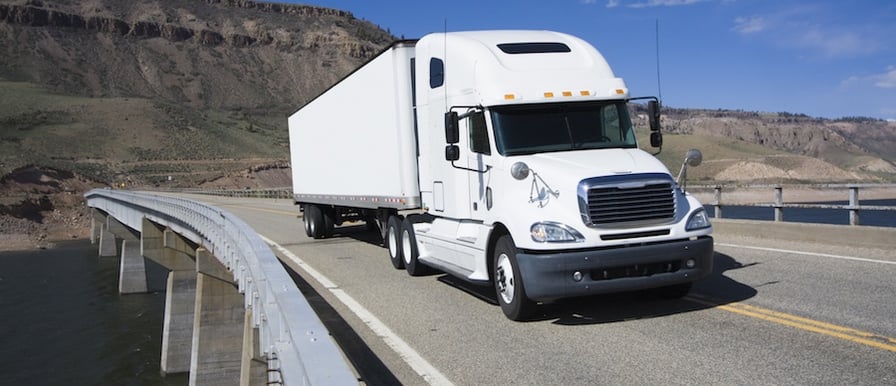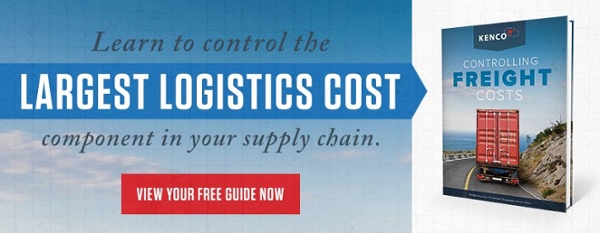
Evolution isn't a rapid process, but it's a necessary one to become bigger, stronger, and more capable. In the transportation services industry, evolution almost invariably appears as a client service: we strive to get items from A to B faster with more transparency and more savings. We work toward a constant awareness of where our product is so we can react to our customers.
To be frank, 3PLs need to innovate, adapt, or die. Having enough room to bend and change is the key to survival as a modern, service-oriented logistics provider.
Here are 8 ways the industry has changed for the better in recent years. Are you taking advantage of these evolutions? If not, it's time to start.
1. Widespread adaptation of TMS:
More 3PLs than ever are offering seamless interfacing with transportation management systems, which prove to be a huge help for client and provider alike. It's a centralized place from which we can execute strategies, conduct assessments, analyze metrics, and pivot toward potential improvements––allowing for growth and innovation.
2. Emerging technologies:
New devices and tracking programs are moving our industry closer and closer to full automation. Much like any computerized system, however, the importance of clean and reliable data feeding the system is clear. For this aspect to grow along with demand, we must give equal weight to procuring and standardizing input from the moment a customer places an order to the time it arrives on their doorstep.
3. S&OP (sales and operations planning) refinement:
It's not a checkbox; it's not a report––it's the heart of a business, period. Forecasts keep surplus and shortages (supply chain killers) far away from operations. When transportation providers can accurately discuss demand expectations with their clients, they can both backtrack to the supply chain to eliminate slowdowns and obstacles all the way back to the raw material level. This ultimately means the entire supply chain is sustainably sped up, getting product into end users' hands quickly and accurately.
4. Roadmap for technology:
We cannot haphazardly mix and match technology in an environment as dynamic as transportation services. API solutions rapidly replace older, antiquated, rigid technology and help keep growth and new tech standardized. To use our own company as an example, Kenco once worked with dozens of LTL carriers. Now, we have strategically partnered with Project 44 to leverage their API technology. We are excited to offer this to our customers––yet another benefit of choosing a leading 3PL like Kenco.
Today, we have more drivers, more controlled complexity, and aim to have lower costs to serve customers better.
Our transportation teams built a roadmap of success and automation for a more thoughtful, innovative relationship.
5. General mindset shift to more innovative providers:
As the familiar saying goes, if you aren't moving, you're standing still. Innovation has become the pivot point that sets 3PLs apart; an automated solution is now a differentiator. Consider companies like Uber or Lyft––while the car-for-hire business has been around as long as the car itself, simply introducing a new interface was enough to create an entirely new, appealing product. If your provider isn't looking to at least research the forefront of transportation trends, it's probably time to find a new provider.
6. Omnichannel:
Arguably the business buzzword of 2016, this multi-pronged approach to eCommerce demands flowed easily over into the shipping world, where it remains today. With the emergence of innovative delivery solutions (see #5) like same-day or next-day shipping from large Amazon-level providers, your 3PL should ideally give your customers access to similar capabilities. Can they adapt if you decide to go local for same-day delivery? Are they ready if you want to add a smaller, denser network of DCs to cut down on overall ship time?
7. Driver demand:
The driver shortage is old news, but it's also not going anywhere. While the news is filled with the latest and greatest on automated trucking, the truth is that regulations and widespread adoption will not be in place for years, and potentially even decades. The ELD mandate stands to force small carriers to comply or to exit the market, so make sure your 3PL is established, well-staffed, and ready to absorb the volume of loss of market capacity without causing issues for your shipments.

8. Concern over liabilities:
Legal requirements and expectations the FMCSA places on shippers to properly vet their carriers, so there’s a huge issue with finding quality drivers. Court cases have been messy and concerning, leading to even more apprehension on the part of carriers looking to hire. 3PLs that are neglectful or inconsistent with their hiring practices give leading 3PLs a bad name, and the ELD restrictions are only going to open up more scrutiny. Clients need to mitigate their risk in this volatile environment by ensuring only satisfactory CSA carriers make it to the contender stage.
To Sum It All Up
These 8 trends are only the most obvious shifts within the transportation industry. Staying informed is an ongoing effort, and a vital one.
If you're ready to take your business to the next level, our freight costs eBook



